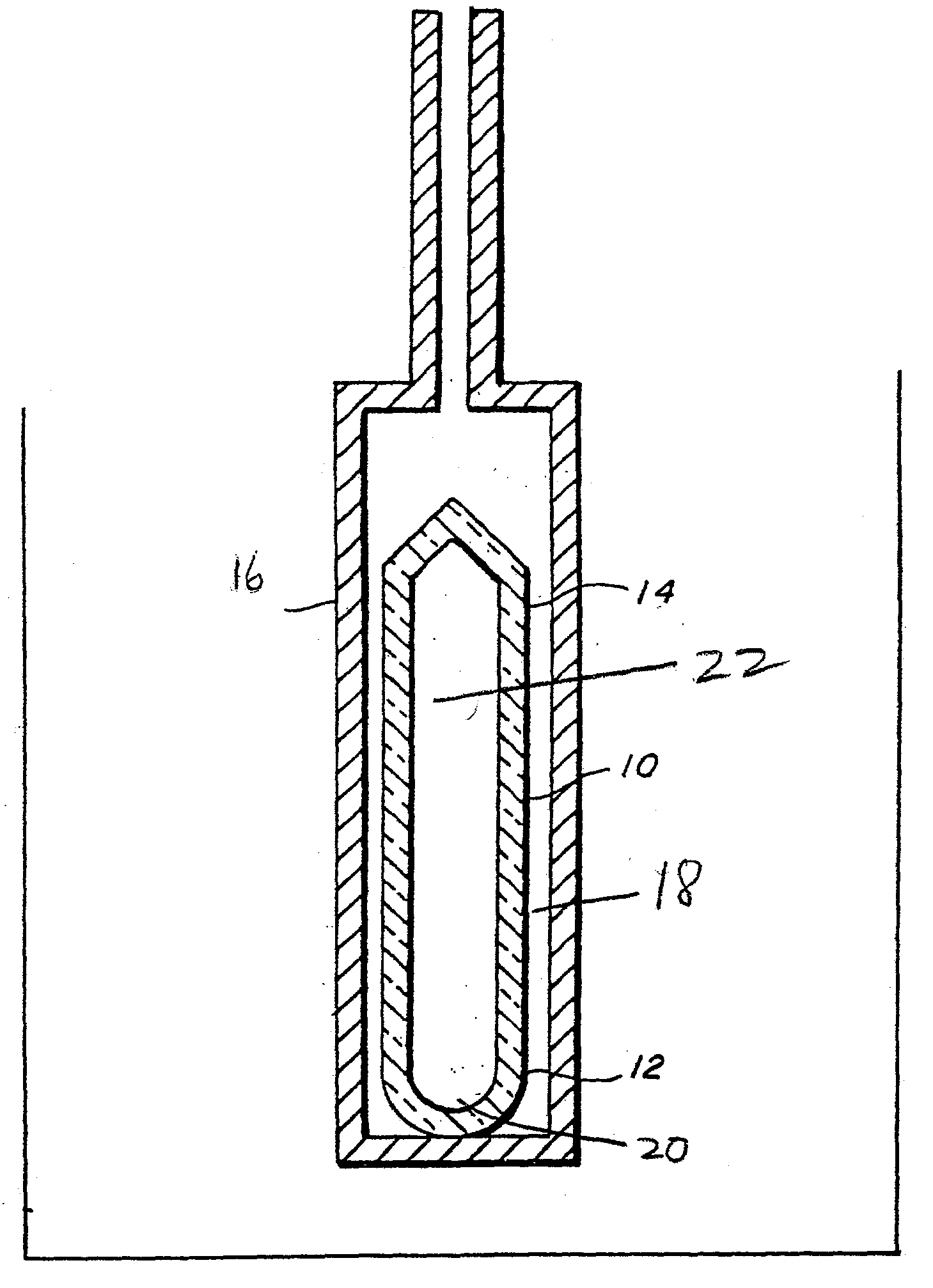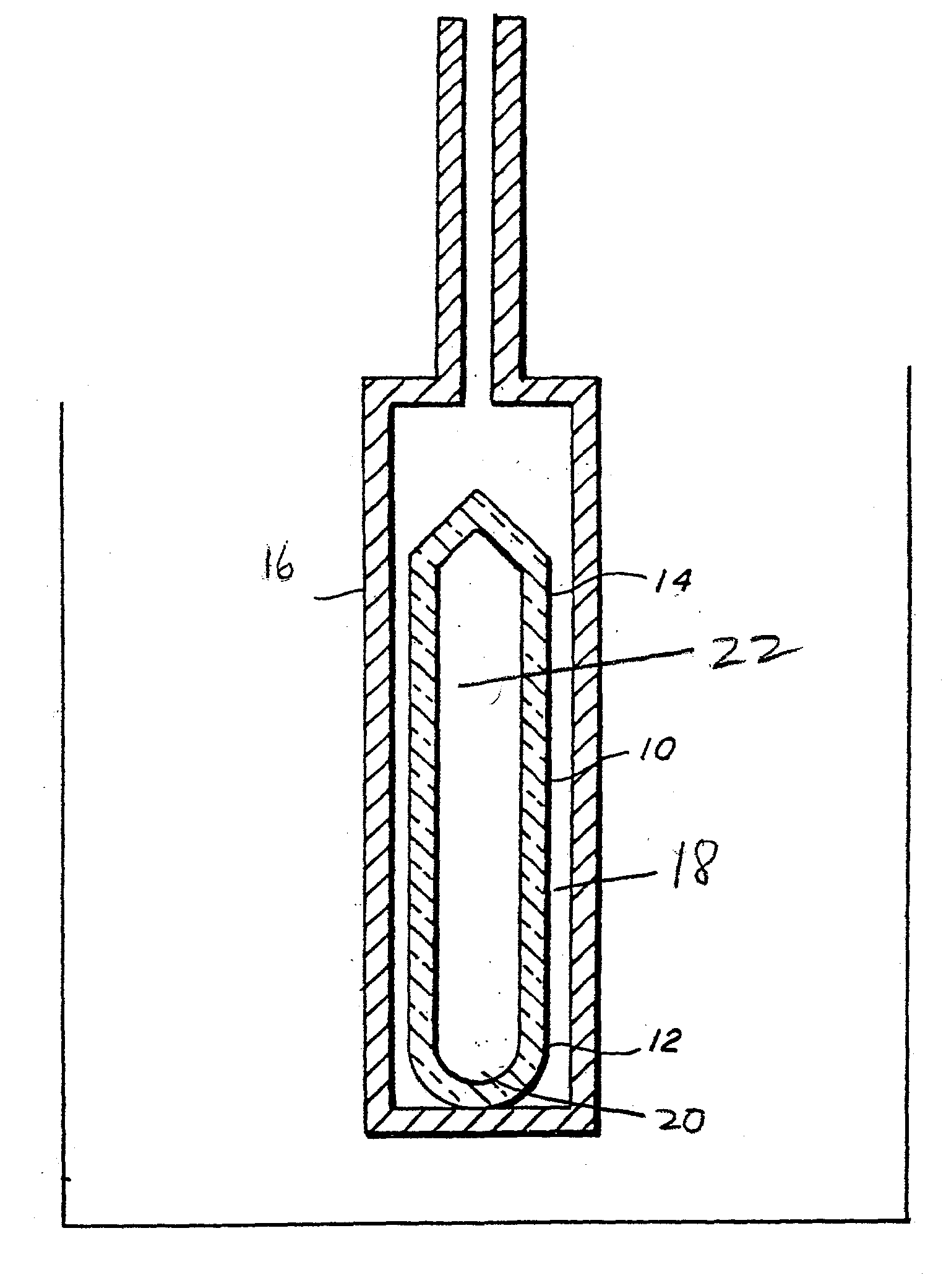Ammonothermal process for bulk synthesis and growth of cubic GaN
a technology of ammonothermal process and growth process, which is applied in the direction of single crystal growth, polycrystalline material growth, chemistry apparatus and processes, etc., can solve the problems of low quality, low quality, pitting, etching, etc., and achieve suppressing or enhancing particular reaction pathways, facilitating transport, and affecting the rate at which crystals are deposited
- Summary
- Abstract
- Description
- Claims
- Application Information
AI Technical Summary
Benefits of technology
Problems solved by technology
Method used
Image
Examples
example 2
[0075] Synthesis of h-GaN in Na / K Flux:
[0076] A Na / K alloy was prepared from equal weights of Na and K. In the dri-lab, a 30 ml alumina crucible with lid was loaded with 10 g of Na / K and 5 g Ga and placed into an Aminco Superpressure vessel with internal dimensions of 1.5 in dia..times.10.5 in long (volume of 305 cm.sup.3), a copper gasket seal, and a cold rating of 14,000 psi. The vessel was pressurized with high purity N.sub.2 to 1500 psi, and the lower half of the vessel was heated in a furnace under N.sub.2 atmosphere (to prevent oxidation) in a vertical orientation to 775-800.degree. C. for 183 hours. The furnace assembly was located in a box constructed of {fraction (1 / 8)} in steel plate to protect against catastrophic failure. After returning to room temperature, the excess NaK was poured out and the remaining Na / K was neutralized with ethanol in a dry box purged by flowing nitrogen. The product was soaked in conc. HCl for several hours to remove intermetallics and then washe...
example 3
[0077] A 4 mmID / 8 mm OD quartz tube which was sealed at one end was charged with 110.7 mg of hex-GaN, (hexagonal GaN was synthesized by the alkali metal flux process) 30 mg LiCl, and 5.5 mg NH.sub.4Cl. Anhydrous NH.sub.3 (36.1 mmol) was condensed into the tube on a vacuum line, and the tube was flame sealed at an interior height of 16.3 cm. The pressure vessel was then heated in a 550.degree. C. tube furnace in a vertical orientation for 42 h such that the hot zone of the pressure vessel was at 477.degree. C. After returning to room temperature, the tube was frozen with liquid nitrogen, opened, and the GaN deposit (102.7 mg) at the top was removed. The very top of the dark yellow deposit consisted of triangular prisms of c-GaN with flat, regular faces. The crystals were up to 100 um across the triangular face and up to 200 um long.
example 4
[0078] The reaction of Example 3 was repeated with 450 mg of feedstock and a run time of 92 h. 210 mg of GaN, which contained many yellow, transparent triangular prisms of c-GaN deposited near the top of the tube.
PUM
 Login to View More
Login to View More Abstract
Description
Claims
Application Information
 Login to View More
Login to View More - R&D
- Intellectual Property
- Life Sciences
- Materials
- Tech Scout
- Unparalleled Data Quality
- Higher Quality Content
- 60% Fewer Hallucinations
Browse by: Latest US Patents, China's latest patents, Technical Efficacy Thesaurus, Application Domain, Technology Topic, Popular Technical Reports.
© 2025 PatSnap. All rights reserved.Legal|Privacy policy|Modern Slavery Act Transparency Statement|Sitemap|About US| Contact US: help@patsnap.com


